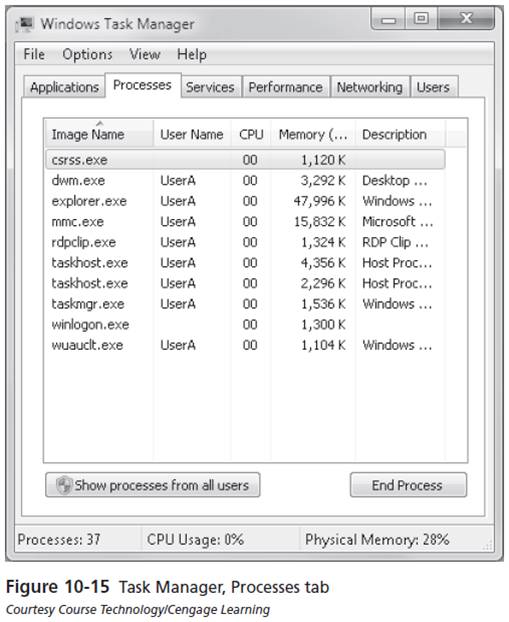Performance Tuning
Task Manager
Processes
- The Processes tab shows the processes running on this computer. By default, only processes started by the current user are displayed.

- In addition to just listing active
processes, Windows 7 displays the user or security context (that is, the user, service, or system
object under which the process is executing) for each process. Also, by default, the percentage of
CPU utilization and memory utilization in bytes is listed. You can change the displayed information
through the View, Select Columns command.
- You can optimize the view of processes by adding additional columns and sorting based on column information. You have the option to set the priority of a process. You can also end a specific process or process tree.
- Almost any listed process can be terminated by selecting it and
then clicking the End Process button. There are some system level
processes that even an administrator doesn't have sufficient
privileges to kill.
- You can assign six priority levels to processes: Realtime, High,
AboveNormal, Normal, BelowNormal, and Low. Realtime is
restricted for use by administrators. You should keep away from
High because it can interfere with essential OS operations
(especially if you have several user processes set to High).
